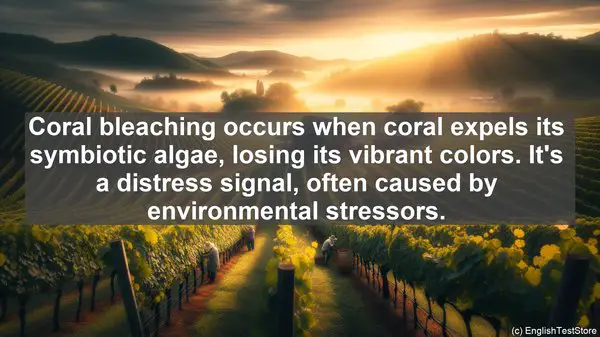Introduction: The Intricate World of Coral Reefs
Today, we’re diving into the mesmerizing realm of coral reefs. These vibrant ecosystems are not only visually stunning but also play a crucial role in our planet’s health. As we explore the intricate web of life within coral reefs, we’ll encounter several terms that often get mixed up. Let’s unravel them one by one!

1. Coral vs. Coral Polyp
While ‘coral’ refers to the entire organism, ‘coral polyp’ is the individual unit that constructs the coral colony. Picture coral as a bustling city, and the coral polyps as its inhabitants, each contributing to the colony’s growth and survival.
2. Coral Bleaching vs. Coral Death
Coral bleaching occurs when coral expels its symbiotic algae, losing its vibrant colors. It’s a distress signal, often caused by environmental stressors. If the stress persists, the coral may die. So, while bleaching is a warning sign, death is the unfortunate consequence.
3. Zooxanthellae vs. Phytoplankton
Zooxanthellae are the photosynthetic algae that live within coral tissues, providing them with nutrients. Phytoplankton, on the other hand, are microscopic plants that float freely in the water. Both are vital for marine ecosystems, but zooxanthellae have a more intimate relationship with corals.
4. Coral Reef vs. Coral Atoll
A coral reef is a structure formed by coral colonies, often close to land. In contrast, a coral atoll is a circular reef surrounding a lagoon, usually found in the open ocean. While both are stunning, the atoll’s unique shape is a result of complex geological processes.
5. Coral Larvae vs. Coral Polyp
Coral larvae are the early, mobile stage of coral. They swim in the water column before settling and metamorphosing into coral polyps. It’s a crucial phase, as successful settlement ensures the reef’s future growth.
6. Coral Reef vs. Coral Ecosystem
A coral reef is a physical structure, while a coral ecosystem encompasses the entire community of organisms, from corals to fish, sponges, and more. Think of the reef as the ‘neighborhood’ and the ecosystem as the ‘city,’ with multiple interactions and dependencies.
7. Coral vs. Coraline Algae
Coral is an animal, while coraline algae are plants. However, they share a symbiotic relationship, with the algae often covering the coral’s surface. This algal ‘coat’ not only provides protection but also contributes to the reef’s overall biodiversity.

8. Coral Reef vs. Rainforest
Coral reefs and rainforests are often called the ‘twin jewels’ of biodiversity. While rainforests thrive on land, coral reefs flourish underwater. Both are hotspots of life, with countless species coexisting and relying on each other for survival.
9. Coral Spawning vs. Coral Fragmentation
Coral spawning is the synchronized release of eggs and sperm by multiple coral colonies. It’s a mesmerizing event, often occurring at specific times of the year. On the other hand, coral fragmentation is the natural process of coral colonies dividing and forming new ones, ensuring genetic diversity.
10. Coral vs. Coraline Debris
Coral debris refers to the broken fragments of coral, often caused by natural factors or human activities. Coraline debris, on the other hand, is the accumulation of calcium carbonate skeletons of coral and other organisms, forming the foundation of the reef’s structure.
